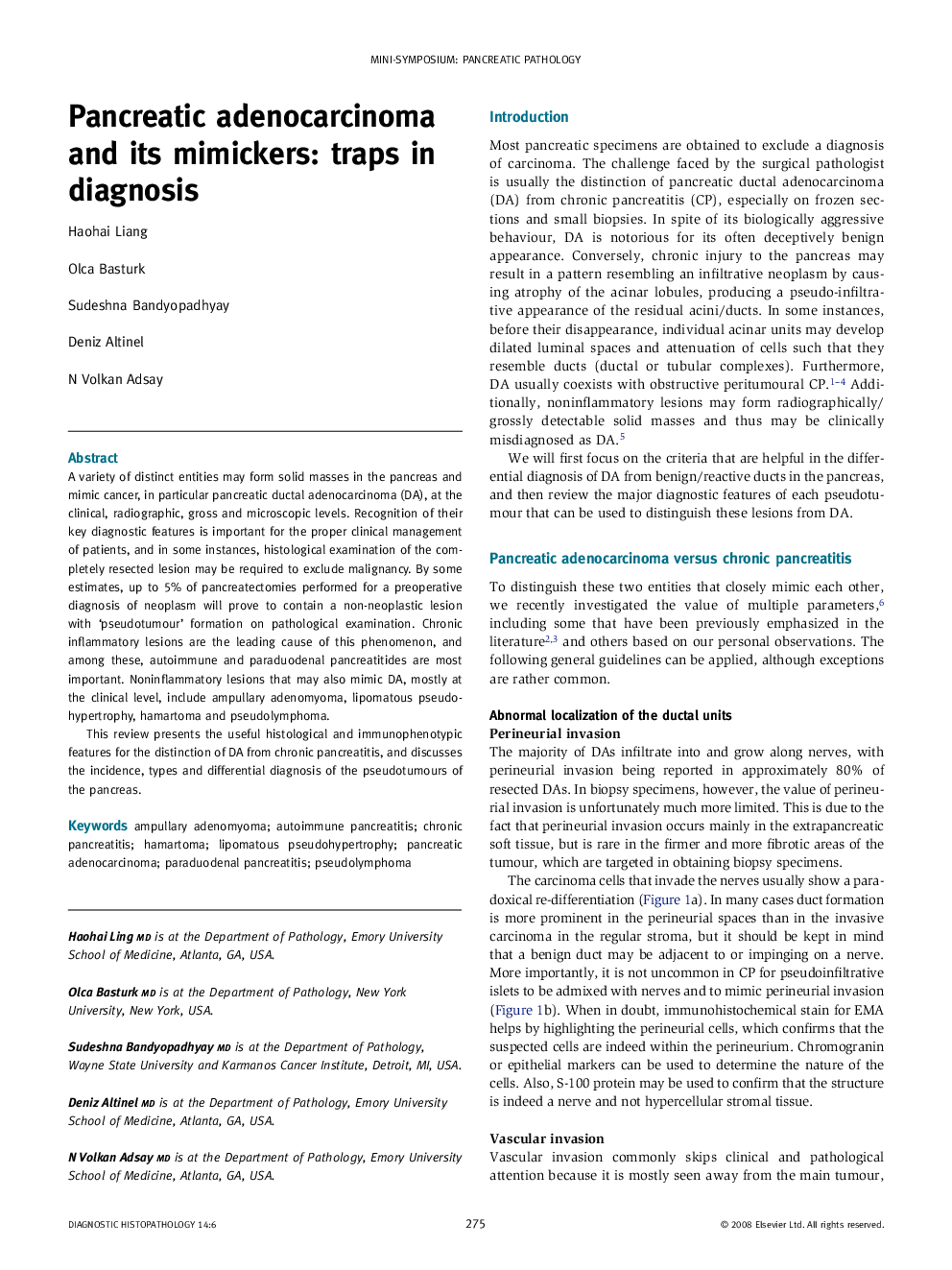| Article ID | Journal | Published Year | Pages | File Type |
|---|---|---|---|---|
| 4131420 | Diagnostic Histopathology | 2008 | 9 Pages |
A variety of distinct entities may form solid masses in the pancreas and mimic cancer, in particular pancreatic ductal adenocarcinoma (DA), at the clinical, radiographic, gross and microscopic levels. Recognition of their key diagnostic features is important for the proper clinical management of patients, and in some instances, histological examination of the completely resected lesion may be required to exclude malignancy. By some estimates, up to 5% of pancreatectomies performed for a preoperative diagnosis of neoplasm will prove to contain a non-neoplastic lesion with ‘pseudotumour’ formation on pathological examination. Chronic inflammatory lesions are the leading cause of this phenomenon, and among these, autoimmune and paraduodenal pancreatitides are most important. Noninflammatory lesions that may also mimic DA, mostly at the clinical level, include ampullary adenomyoma, lipomatous pseudohypertrophy, hamartoma and pseudolymphoma.This review presents the useful histological and immunophenotypic features for the distinction of DA from chronic pancreatitis, and discusses the incidence, types and differential diagnosis of the pseudotumours of the pancreas.
